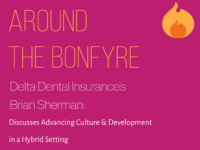Employee experience design can ensure your EX strategy is based on what employees really want, and not just what you think they need.
Letting go of preconceived assumptions is perhaps the biggest challenge HR professionals face when planning an employee experience (EX) strategy. It’s easy to fall back on what we think people want rather than actually seeking out feedback. And even when we have feedback, we often interpret it to fit our own biases.
This is why experience design is so valuable when it comes to EX.
Experience design is a design process that puts the user first when solving problems. In the case of EX, the users are your employees, and your ultimate goal is to design an experience that is intuitive, engaging, and ultimately satisfying.
Since EX is already based on the individual wants and needs of employees, it makes sense to use a strategy that takes the same approach. However, experience design is a broad concept with many interpretations that can easily become overwhelming to sift through to find one applicable to EX. To save you time and frustration, we’ve applied design thinking—one of the most common methodologies used in experience design—into actionable steps that’ll place employees at the forefront of your strategy.
Related: Improving the Employee Experience: Where Does It Start?
Using the employee experience design strategy
1. Understand and observe
The starting point for your employee experience design strategy is research. Look into what EX is and how it applies to your specific industry. Read books and articles, listen to podcasts, and seek out other HR professionals to find out what they consider best practices for EX.
Once you have a solid understanding, take the knowledge into the field and observe. Remember that you’re looking at how employees interpret their experience—not just a description of what they’re doing. Interpretations are based on emotions and therefore require a look at the conditions that cause those emotions.
In the context of employee experience design, observation entails going where your employees are, whether that’s in an office, a factory, a healthcare setting, or even out in the field. If your organization has a multitude of employee segments, then you should visit each setting. When you’re observing, look for conditions that may lead to negative emotions. Some examples would be a lack of available conference rooms which hampers productivity in the office and causes feelings of frustration, or a poorly stocked break room leaving employees working a manufacturing night shift without coffee or tea, causing resentment and apathy.
Of course, when it comes to getting feedback, you can’t beat talking to employees and asking them directly what struggles they’re facing in the workplace. Unfortunately, this isn’t feasible for large organizations with thousands of employees, so that’s where surveys—both pulse surveys and recurring satisfaction surveys—come in. For the most holistic view, use a combination of observation, open dialogue, and surveys.
2. Brainstorm and ideate
This phase is all about innovation. Once you have an understanding of what the current EX is like, your next step is to “ideate,” or conceptualize possible solutions to common problems you encountered uncovered through feedback. This isn’t a one-person task, nor is it just a task for the HR department. For best results, form a cross-functional team of employees and leaders to provide input.
After you’ve created your team, bring them together and start brainstorming ways to problem solve. Don’t be afraid to get creative. You want as many solutions as possible, so refrain from passing judgment on ideas that may seem too outlandish at first. Once you start to run out of ideas, you can begin narrowing down to the ones that are most feasible for your organization.
3. Test and implement
Now it’s time to start testing. Take your best ideas and experiment with putting them into place. It’s critical that you seek feedback from employees throughout this process. After all, your goal is to improve their experience, and if you disregard how your solution actually affects them, your efforts will be for naught. Communicate with employees from the start that new solutions are in the testing phase and may be altered according to feedback.
It’s very likely that new issues will arise from those solutions you put in place. Maybe you decide to tackle the issue of not having enough conference rooms by providing access to a local coworking space, but this then creates a problem with communication since some employees are out of the office. If the solution doesn’t work, try something else. Remember that you can’t make every employee happy, but you can make the majority of employees happy. If there are ideas that simply won’t work, be transparent with your employees and explain why and what other steps you’re taking to address the issue.
When a solution sticks and the feedback you receive is overwhelmingly positive, you’ve reached your goal of implementation. Solving a few problems doesn’t mean that the employee experience design process is over, though. It must be a continuous process that accounts for shifts in attitudes, demographics, industry standards, and other variables.
Ultimately, the key to employee experience design is letting employees guide the process. When you trust in employees to know what it is they need to do their jobs, you’ll create an experience that leads to higher engagement and happier employees.



 3 min
3 min




